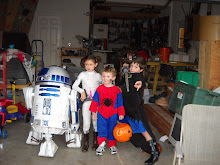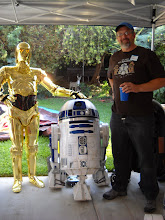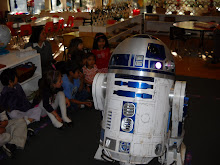
I also laid out and drilled the holes for the fittings into the foot strips for the front outer feet. They are in the corner of the picture above. If you don't have one of these, get one:

It's a stepped drill bit and it is really effective for cutting big diameter holes. The steps mean that it doesn't have to remove so much material as it goes. Much faster.
Then I laid out the holes on the foot shells, took a deep breath, and drilled some big craters in them. Like Norm Abrams says, measure twice, cut once. But I usually measure 3 or 4 times, and still have to calm myself before cutting into a piece that I have been working on for months. But they came out fine:

I also laid out and drilled the mounting holes in the battery boxes. I thought I had a picture, but I can't find it now. But I can find this killer picture of a bad ass alpha male gorilla from the San Francisco zoo instead:

When I drilled the holes into the battery boxes I discovered something that will be relevant to folks who have bought them from me. The thickness of the curved wall is about 1/4", so when you cut that 5/8" hole in the face, the wall inside impinges a bit into where the sleeve on the knurled fittings goes. That is, you can drill the face hole fine, but inside there's some interference because the side walls are thick. Don't try to ream that our with the drill bit; you'll just chew up the face hole and make it too big. Use a dremel tool with a small grinding bit and go inside and ream out enough material to make room for the knurled fitting. It took me about 5 minutes to clear it so that the fitting would sit right on the battery box.
And here's the result with the hoses rough fit into the foot shells and battery boxes. I'm not going to glue them in until I think about it for a day or so. I can get some nuts to thread onto the fittings inside the foot shells, I think. But I don't know how functional the threads on the resin fittings are. But I think I'll epoxy the battery box end of the hoses in.






















